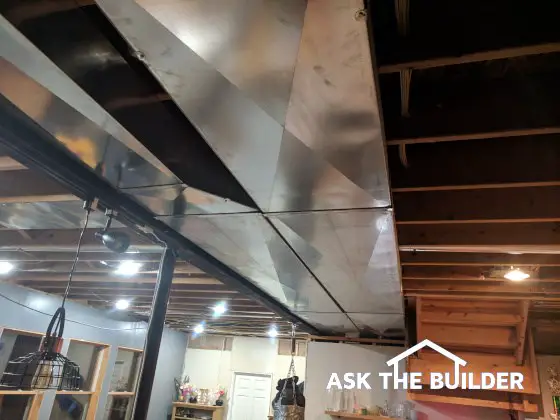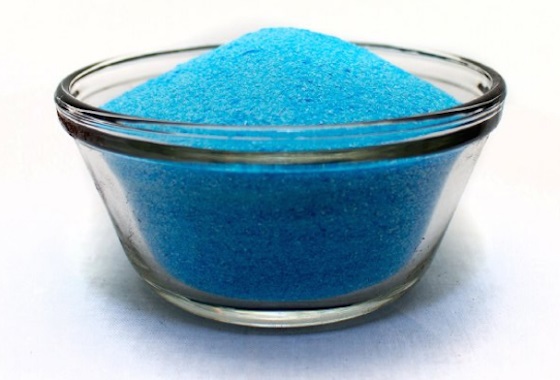Why Your House is Cold and Stop Patio Algae and Moss

Main heating supply ducts need to get smaller the farther away they are from the furnace. Note how the large duct on the left narrows down. (C) Copyright 2018 Tim Carter
Why Your House Is Cold
Question #1: Tim, I’ve got a forced-air furnace. Several rooms in my house are cold in the winter and are hot and stuffy in the summer when the AC is on. Most of the rooms are comfortable. Why do you think this is the case? What can be done to fix it and if I build a new home how can I prevent it? Kelly S., Rochester, NY
Do you have the same heating and cooling problems that Kelly has? I know many do based on the number of people who email me each week when it gets cold and hot!
There are several possible reasons why a few rooms in your home might not be as comfortable as others. Let’s assume that the vent covers in the rooms are wide open, the damper controls in the branch ducts are wide open and there are no stuffed animals being held prisoners down in the ducts.
It’s important to realize that furnaces and AC units are like shoes and clothes. They are matched to the heating and cooling requirements of your home. If you buy shoes that are too small, you bet you’ll be uncomfortable. A professional heating and cooling contractor will do calculations that tell him exactly how many cubic feet per minute of conditioned air must go into each room to keep you comfortable.
The supply air duct system in your home needs to mimic the blood vessels in your body. The reason your blood pressure is the same throughout your entire body, even at your fingertip, is because the blood vessels get smaller and smaller the farther away they are from your heart.
Your main supply duct needs to do the same or otherwise, there’s not enough energy in the remaining forced air to push into the rooms at the far end of your home. If your basement is unfinished, look at your main supply duct to see if it gets smaller as branch ducts go off towards the other rooms that are comfortable.
You might be able to fix your existing supply ducts with relative ease if they’re accessible. The first step in the process is to have a contractor do the calculations to see if enough air is getting to each room. There are online help aids if you want to do this yourself. Look for a Manual J guidebook should you want to attempt to do all the calculations.
The second step is to make sure your furnace or AC units are indeed the correct sizes. A professional contractor will probably have to assist you with this. If your furnace and AC unit are sized properly, then make sure your main supply duct does get smaller and smaller. If it doesn’t, then you’ll have to modify it.
Stop Patio Algae and Moss
Question #2: Mr. Tim, can you help me? I’m in a constant battle fighting mold, mildew, and algae on my outdoor patio and sidewalks. I’m tired of scrubbing them. Is there some magic liquid I can spray on the concrete and paver brick? David L., Orlando, FL
I don’t know about you, but I have the same problem as David. On the north side of my home, I’ve got a paver stone pad outside a door from my garage. It constantly has slippery green algae I have to clean off, well I used to clean it!
Mold, mildew, algae, and who-knows-what likes to grow where they can get abundant food and moisture. Shaded patios and sidewalks can be prime candidates. These organisms will grow on vertical surfaces too such as siding and brick.
I decided to solve the problem using technology from shipbuilders of old. Go back more than 200 years and the shipbuilders used thin copper plating on the hulls of sailing ships to prevent the growth of barnacles that would create drag and slow down the ships.
Copper is a natural, safe biocide. As with most things you don’t want too much as it can cause problems. I’ve discovered a safe way to put copper on my pavers so it doesn’t leach into the pure water of the lake I live on here in New Hampshire.
I mix up about 1.75 pounds of blue copper sulfate crystals with a gallon of hot water.

This is copper sulfate. It dissolves easily in water. Spray it on with a hand-pump sprayer. CLICK THE IMAGE TO ORDER THE COPPER SULFATE NOW.
The crystals dissolve very fast as you stir them. I then put this solution in a standard hand-pump sprayer and apply a fine mist of the liquid just on the pavers and concrete.
I’m careful to make sure I don’t have any get in the grass and I only put on enough so it doesn’t puddle. You’ll discover it almost always soaks into the masonry in a few minutes.
After it dries, I apply more. I do this about three or four times so the copper soaks down into the surface of the masonry. The surface of the concrete does end up with a blueish color, but the color fades away in a week or two. The best part is I don’t have any algae, mold or mildew problems and neither will you!
4 Responses to Why Your House is Cold and Stop Patio Algae and Moss